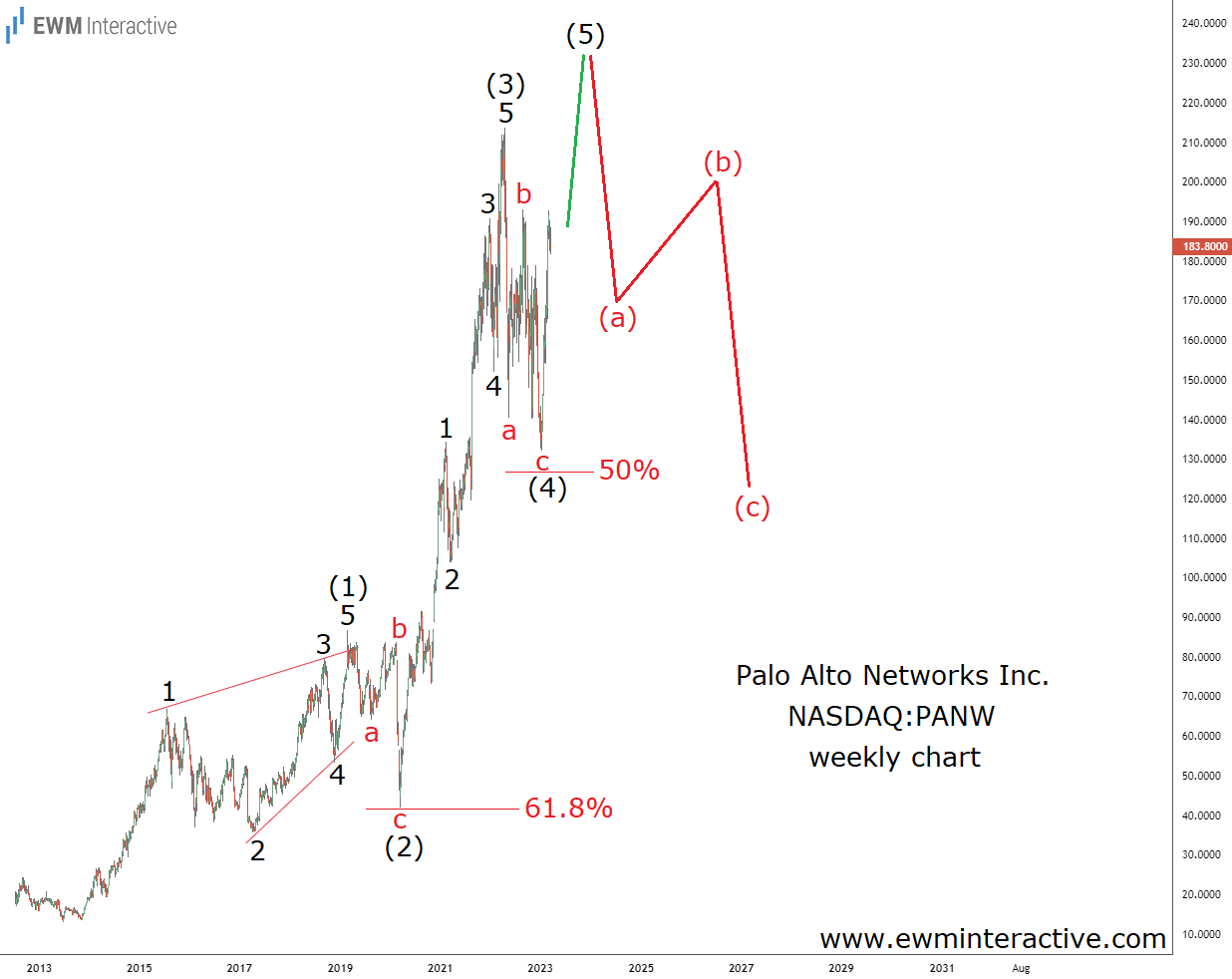Cybersecurity is all the rage on Wall Street right now. The Covid-19 pandemic sped up the adoption of digital technologies, and the growing need to protect them came with that. As a result, companies in the sector have seen their valuations skyrocket in recent years.
Of course, some of them couldn’t live up to investors’ high expectations. Our readers saw in real time how Elliott Wave analysis helped us predict the crash in the once-hot stock of Rapid7 (NASDAQ:RPD). Zscaler (NASDAQ:ZS) is another cybersecurity company whose share price has recently come back to earth.
Palo Alto Networks (NASDAQ:PANW), on the other hand, is still trading not far away from its all-time high. The stock reached a record of $213 in April 2022. It barely held above $132 a share in the first days of 2023 but has since recovered most of its losses, currently sitting at $183.80. Besides, there is no shortage of reasons explaining the surge in PANW stock.
Business-wise, the company seems to be making all the right moves. Revenue has more than doubled in the past five years without excessive debt, and annual free cash flow is approaching $2B. So, fundamentally speaking, Palo Alto Networks is one very sound enterprise. Unfortunately, that might be the problem.
Better Not to Chase Palo Alto Networks Stock
PANW has been up by over 1300% since the summer of 2013. When things have been going so well, investors often forget that their pay price still matters. Palo Alto Networks trades 46 times adjusted forward earnings as of this writing. In other words, it is priced for perfection. At such a lofty valuation, it would only take a slight misstep for the market to sour on the stock. The Elliott Wave chart below is already preparing us for one.

PANW’s weekly chart reveals its uptrend from $13.03 in June 2013. It can easily be seen as a five-wave impulse pattern labeled (1)-(2)-(3)-(4)-(5). Wave (1) is a textbook leading diagonal. It was followed by an a-b-c correction in wave (2) down to the 61.8% Fibonacci support level. Wave (3) is the extended one; its five sub-waves are also visible. As usual, wave (4) was shallower than wave (2) and didn’t even touch the 50% retracement mark.
If this count is correct, the current recovery is part of the fifth and final waves of the sequence. Wave (5) is supposed to exceed the top of wave (3), putting targets above $220 within reach. Unfortunately for the bulls, a three-wave correction follows every impulse. Instead of celebrating the new record, investors should brace for a major decline back to the support of wave (4); depending on where exactly the top forms, that would be a 40%-50% drop in the valuation of Palo Alto Networks.
